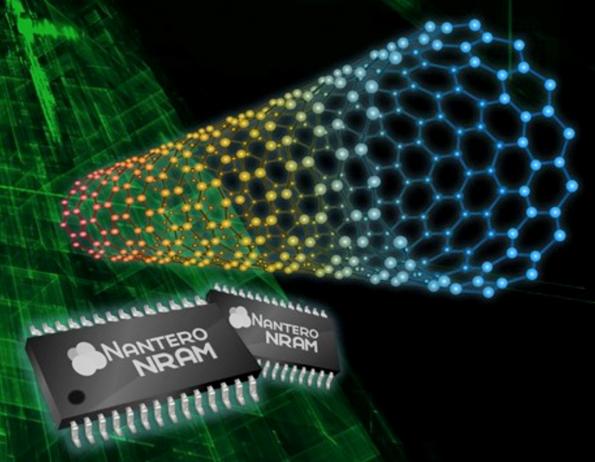
Back in July 2000, the paper was laying the foundations for a bistable non-volatile RAM cell to be designed with a suspended Single Wall Carbon Nano Tubes (SWCNTs) crossbar array, switchable into well-defined Off and On states. The device being designed in such a way that each state represent a potential energy minimum (a balance between elastic energy in the Off state and the van der Waals energy in the On state), switched by charging the nanotubes to produce attractive or repulsive electrostatic forces.

In his paper describing the 1 transistor SWNT NRAM cell, Rueckes had established possible switching speeds up to 100GHz for a 20nm device, extrapolating this to 200GHz operation for a cell designed at the 5nm node (owing to the smaller effective mass of the moving CNTs). Other claims are that the NRAM operates at orders of magnitude more cycles than flash (over 1011 of program endurance) and retains memory for over 10 years at 300ºC (could be over a thousand years at 85ºC)
Since then, the startup has secured an extensive patent portfolio (175+ US patents issued and over 200 patent applications pending, including internationally) and boasts a dozen high profile customers lining up to license its IP.
The company expects both foundries and OEMs to license the IP, for some to embed the CMOS-compatible NRAM within chip designs, and for others to produce DDR4-compatible multi-GByte arrays as pure memory chips.
"We want to be the ARM of the memory business", said Greg Schmergel, Nantero's CEO and other Co-founder in an interview with EETimes Europe.
